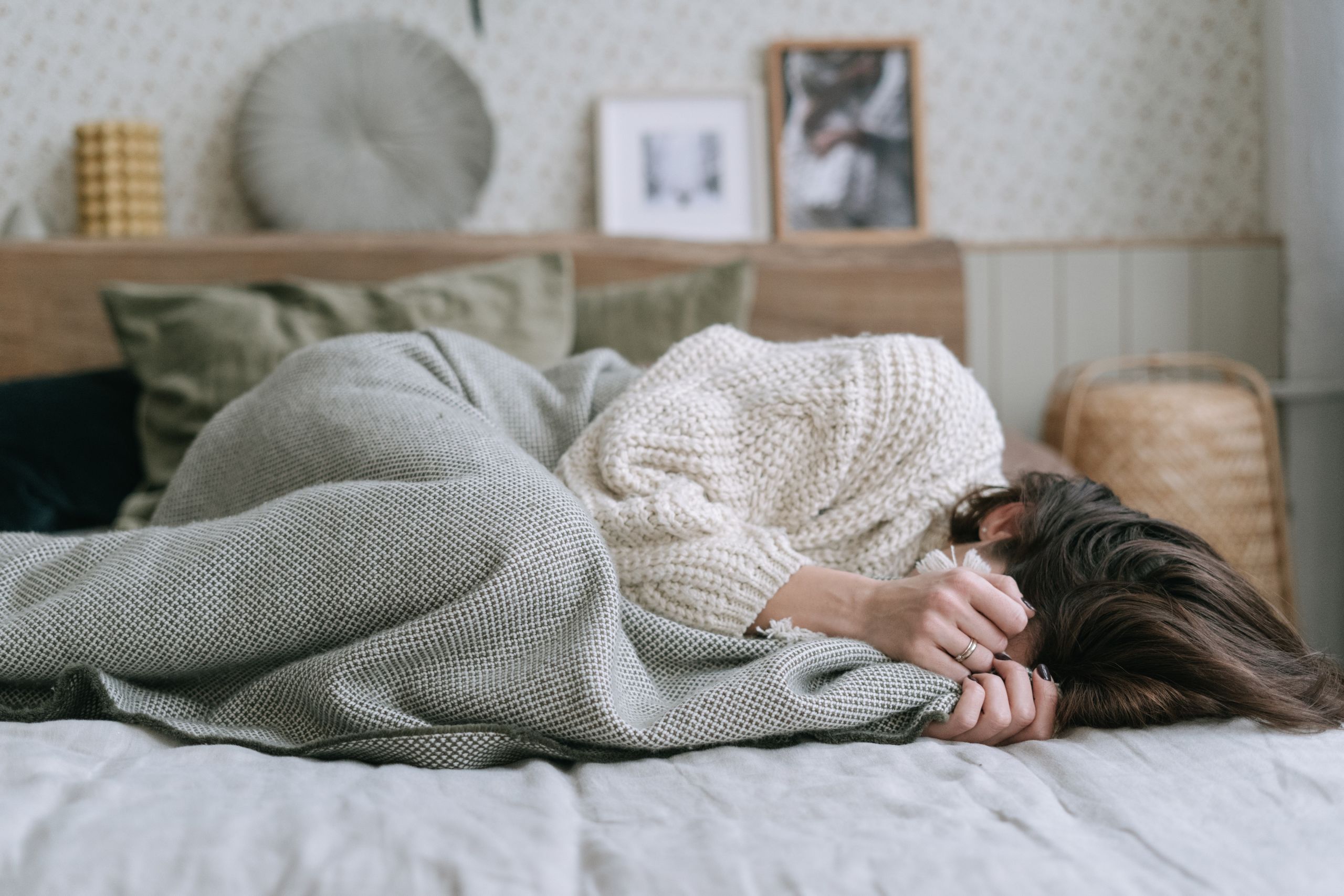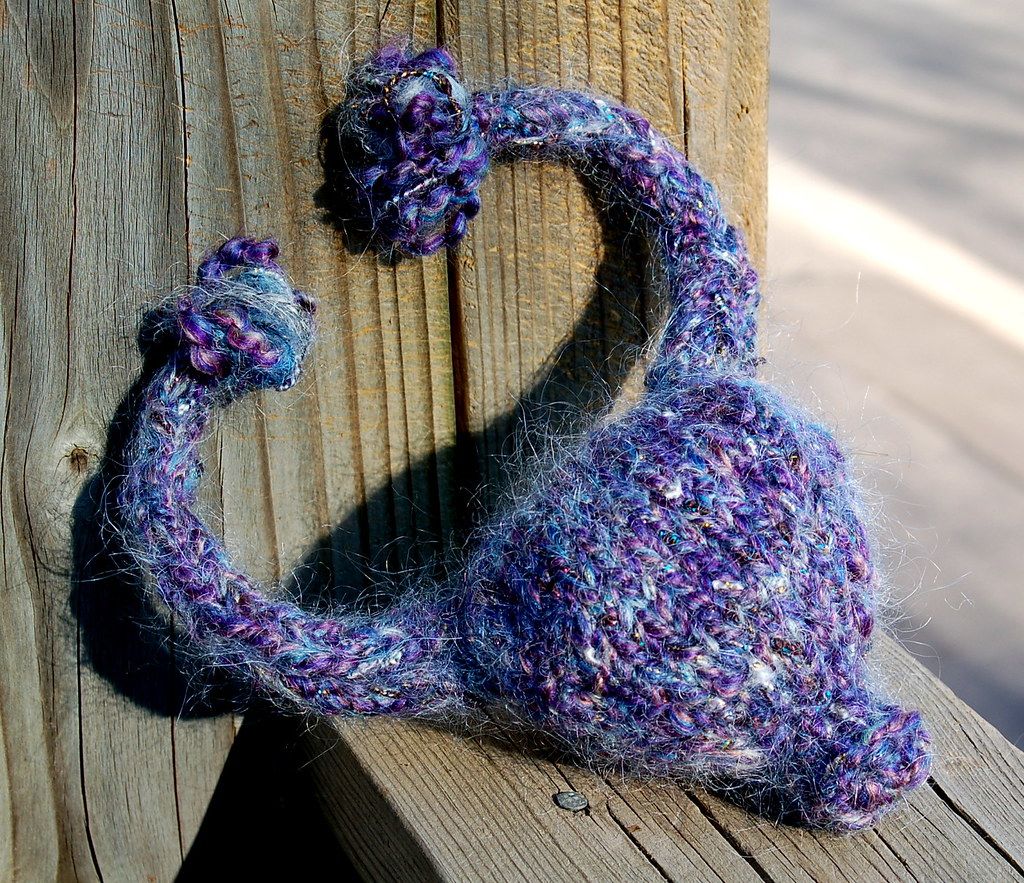The agonising disease afflicting millions of women each day
Special report on endometriosis

Different GPs. Different hospitals. Years of trips going backward and forwards between them all for different scans, only to be told you might never have children, and on top of that you’ll likely need surgery every couple of years.
This is the reality for 1.5 million people in the UK who suffer from excruciating pain, unmanageably heavy periods and the embarrassment of not being believed or listened to, all because of endometriosis. They aren’t statistics. These are their lives.
Endometriosis is a chronic illness that affects women of child-bearing age.
“It occurs when cells from the womb lining grow in abnormal places within the body," says consultant obstetrician and gynaecologist at the Royal Devon and Exeter Hospital, Neil Liversedge. "The most common place to find it is in the pelvis or the ovaries, but it can be found in other parts of the body. It has been found in the nose before now.”
These cells can either change to become endometrial cells, move into the pelvis through the fallopian tubes during a period or sometimes pass through into the blood stream. It can cause chronic pain and infertility, severely impacting upon people’s lives.
Keisha Meek, 28, Nottingham
The euphoric joy at seeing a positive pregnancy test is something Keisha Meek has experienced four times in her life. Only she has nothing to show for it now. Her endometriosis has taken her children away from her.
The trauma, the heartbreak – as someone watching in on her life, it would be almost impossible to see how she can carry on so strong, so powerful, so hopeful. But she does. She remains optimistic even to this day, despite the ongoing medical difficulties she faces as a result of her endometriosis.
When she was 11, Keisha started her period, it was incredibly heavy, with large clots and it caused her lots of pain. At the time, she was told it was just normal. However, after going back to the doctors age 14, Keisha was put on the pill and while it did help a bit, it didn’t make much difference.
“At the time, my dad had brain cancer, but he couldn’t understand why he felt better than me,” says Keisha. “So, we went back to the doctors and when I was about 17, I got diagnosed with PCOS after an ultrasound scan.”
But this diagnosis did little to improve Keisha’s unbearable periods. She says: “I still had really bad periods, I went back on the pill but they were just so painful. I’d missed school, sixth form and then work. I struggled so much because I was so sick.”
Women showing the symptoms of endometriosis are often put on the pill, or other forms of contraception to stop the endometrial cells from growing and making the endometriosis worse and in turn exacerbating the symptoms. Neil Liversedge says: “With the combined pill, the lining of the womb stays thin because you only have a withdrawal bleed, this keeps the endo essentially thin too.”
After living with her PCOS diagnosis for four years, in 2014 Keisha moved to Nottingham to live with her mum aged 21. “My mum had gynae problems from being 15 or 16, she had PCOS and had recently been diagnosed with endo,” she says. This made Keisha want to push for a laparoscopy, knowing that endometriosis can be hereditary.
After finally getting a laparoscopy, it was found that she did have endometriosis, so her surgeon decided to remove these by ablation surgery – essentially burning out endometrial cells. “Six months after the surgery, I was back in pain and that continued until I was 27, having the ablation surgery one to two times a year,” says Keisha.
Throughout this time, Keisha also suffered four miscarriages, all as a likely result of her endometriosis. Three of those have occurred naturally but one needed to be medically induced because her endo was making her so unwell.
“Eight weeks after the abortion, I was having my cysts removed,” she says. “I had a big breakdown, I was off work for six months, on half wages. I was having to borrow money just to keep a roof over my head.”
In 2017, after years of continued suffering, Keisha finally went to speak to a specialist in endometriosis – of which there are only very few in the UK. Ironically, this specialist worked in Sheffield, five miles from where Keisha had lived with her dad as a teenager.
“This was my tenth surgery now at this point, and he found years of missed endo – on my bowel, appendix, ovaries, bladder. It was like an explosion, splattered round in different places,
“Then I got booked in for the excision surgery, there would have been a long waiting list on the NHS, but because I was so unwell and work had private health insurance, I was able to get it on that,” says Keisha.
Excision surgery involves cutting the endometriosis from the root and while at the time, Keisha had under gone nine ablation surgeries, in recent years the number of specialists doing the excision surgery has increased. “People tend to do excisions now, it is much more common,” says Neil Liversedge.
But as is common with any endometriosis surgery, Keisha’s returned, and in 2018 she was put on Zoladex, which can cause a chemical menopause. This is because during the menopause, endometriosis will stop growing. “It burns itself out after the menopause because there are no hormones to stimulate the lining of the womb so it will just shrivel itself up,” says Neil.
While being on the Zoladex, Keisha’s mental health rapidly deteriorated. “I was really depressed, I tried to commit suicide. I spent Christmas 2018 in hospital,” she says.
After coming off the Zoladex, Keisha’s endometriosis continued to get worse and the number of symptoms she had continued to increase. So, it was decided Keisha would have surgery again, this time to see if she had endometriosis on her lungs. However, as a result of the pandemic this was put on hold, which meant she was put on Prostap, to induce another menopause so as to try and elevate the symptoms.
“It worried me because having a chemical menopause for more than six months can cause severe lack of mobility. But my main worry is fertility, especially being 30 next year,” she says. “I am worried about fertility, what its doing to my organs, worried because I have been getting weaker. What is my quality of life going to be like soon if I don’t get help.”
As a result of the possible endometriosis on her lungs, Keisha was told she was clinically extremely vulnerable and needed to shield during the first lockdown.
“My mental health was a mess, I was anxious about everything, I didn’t even want to go for a walk. I saw my friends in July and August but I didn’t enjoy it because I was so anxious,” she says.
Keisha also works as part of the NHS in a hospital, so she saw first-hand the number of people suffering from COVID-19. She says, “I saw COVID patients when I wasn’t shielding, seeing them in ICU, it was awful. I was so scared that would be me.”
Keisha’s journey with endometriosis is ongoing, but she has spent her time during lockdown working with other women to raise awareness for the realities of life with endometriosis especially during the pandemic.
“The impact endo can have on relationships, friendships, work life, all because people don’t understand,” she says.
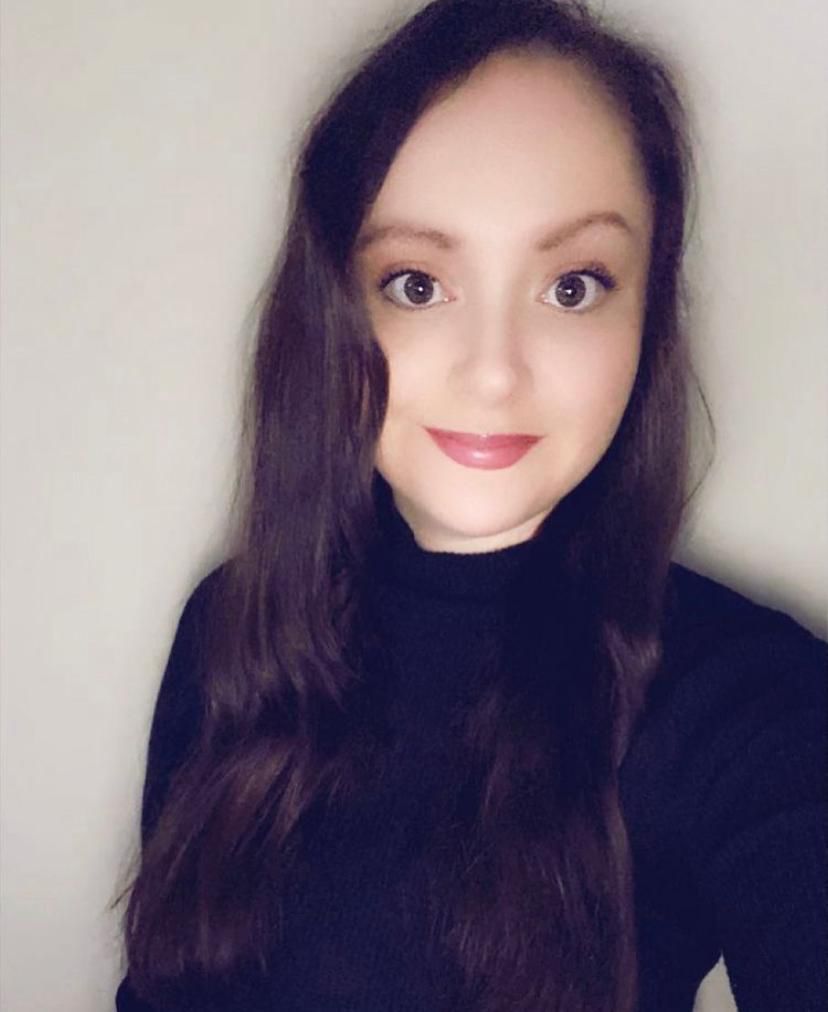
“We had been having a BBQ, having a really good time and then I was washing up and I just fell to the ground. I thought I had been stabbed or shot.”
The impact that endometriosis can have on couples has been the focus on studies involving the Centre for Reproduction Research at De Montfort University in Leicester.
“Some couples found it more challenging than others, but they were all struggling,” says centre director, Professor Nicky Hudson. “To inform how endo works in the real world and engage with policy makers is a big achievement from the project
“One suggestion made was that couples should be looked after – inviting male partners into consultations when appropriate, for example.”
The research done at De Montfort University has been able to inform charities, such as Endometriosis UK, to provide information and materials about reducing the negative consequences endometriosis can have on couples.

Emma Bentley, 25, Hampshire
Going from a relaxing day shopping in the January sales to laying in agony in a hospital bed, barely able to remember how you got there. Then after various different scans, to be told you have endometriosis when not two years earlier you were told the pain was all in your head, so just go off and have children. That's Emma Bentley’s recollection of her endometriosis diagnosis when she was 23 years old.
Aged 13, Emma started having her period – not a problem, not overly heavy or painful, as far as she was aware everything was going smoothly. That was until she turned 16 years old. “In Year 11, I noticed it becoming quite heavy, and unpredictable which I really struggled with. So, at 17 years old, I went on the pill to stop them and they stopped for four years, but towards the end of the four years I began to have a bit of breakthrough bleeding,” she says.
Many women will be well aware of the inaccurate understanding about being on the pill long-term and as much as a doctor can say it is safe, there is almost this built-in wiring that it isn’t. “There can be a stigma about being on the pill and I definitely fell for that one. I came off the pill and that was the worst decision I made. I bled all the time on and off, my hormones were all over the place, I had weight gain, acne, everything,” says Emma.
Due to Emma’s now worsening periods, she decided to go back to the doctors, where like for many women – she was diagnosed with PCOS. Diagnosing endometriosis can be very difficult because it shares lots of common symptoms with other illnesses, which is why it can take extensive scans and surgeries to diagnose. “There is not a lot of research, that’s part of the problem with endometriosis, little is known about it and lots is based around trial approach,” says Nicky Hudson.
Despite being diagnosed with PCOS and being put on HRT to deal with her high testosterone levels, Emma was still suffering from severe pelvic pain and heavy periods. “I felt like I had a brick in my stomach all the time. The doctor just put it down to PCOS,” she says.
Emma’s mum did have endometriosis, so after a while Emma decided to speak to her doctor about possibly having endo, knowing it can be hereditary. So, she was sent to have an ultrasound scan, although they very rarely show up endometriosis. “Most people’s ultrasound scan will usually look normal, unless it’s very severe ovarian endometriosis,” says Neil Liversedge, and Emma’s was no different.
It was at this point, Emma decided to pay privately to have a laparoscopy. “A couple of nights before the operation I was doing a last bit of research. I didn’t get a good vibe from the gynae, she was just adamant I didn’t have it,” she says.
Despite her concerns, Emma went ahead and had the surgery. “She told me I do not have endo, it was all in my head, so I need to go home, have CBT and then have lots of babies,” she says. “I felt absolutely mortified, she gave me the pictures from my scan and I didn’t know what I was looking at, and I had no follow up appointment.”
Emma’s periods continued to be excruciating but she didn’t want to go back to the doctors or complain about it because she had been told she was absolutely fine. “My periods were still bad and painful, but I felt like I couldn’t complain and no one would believe me. This carried on for a year and a half, lots of other things cropped up and the doctors would say there is nothing wrong. But I was like I swear there is something wrong with me,” she says.
Then, in January 2019, Emma and her mum were going shopping when a wave of sickness came over her and she was in such agony that she could barely move. “My mum took me to the hospital, I don’t even really remember the journey,” she says.
Once in hospital, a junior doctor did an internal ultrasound, “they came and asked me if I’d heard of endometriosis. Obviously, I said I’ve already had the operation and I don’t have it,” says Emma.
“It was then I got told my left ovary had fused with my uterus. Two of my organs were literally stuck together, the doctors were like no wonder you’re in pain,” she says. “I was in shock and disbelief, I’d been told for years it’s all in my head but now I was being told it had progressed so badly two organs were stuck together,” she says.
In April 2019, Emma had her second laparoscopy, they found she had widespread endometriosis on both pelvic sidewalls, her ovaries, uterus, pouch of douglas and her bowel – she had it removed using excision surgery.
“I instantly woke up from the op feeling better than I had in years. In April and May 2020, the pain started to creep back in, but I waited it out, see how long I could last. But by November 2020, I was getting everyday pain so I booked my next operation,” says Emma.
Emma’s surgery was due to take place on 4 February 2021, but got cancelled as a result of the coronavirus pandemic. Having to wait indefinitely for her surgery is obviously a growing concern for Emma, but as with many other women, she is remaining positive about the future despite the possible consequences her endometriosis may have on her fertility.
“It does worry me massively that we just don’t know. My endo is getting worse and growing in places I don’t want it, and I don’t want it to impact on my fertility because of the ignorance of the first doctors. Hopefully, it won’t do too much damage to my organs – I’ve just got to stay positive,” she says.
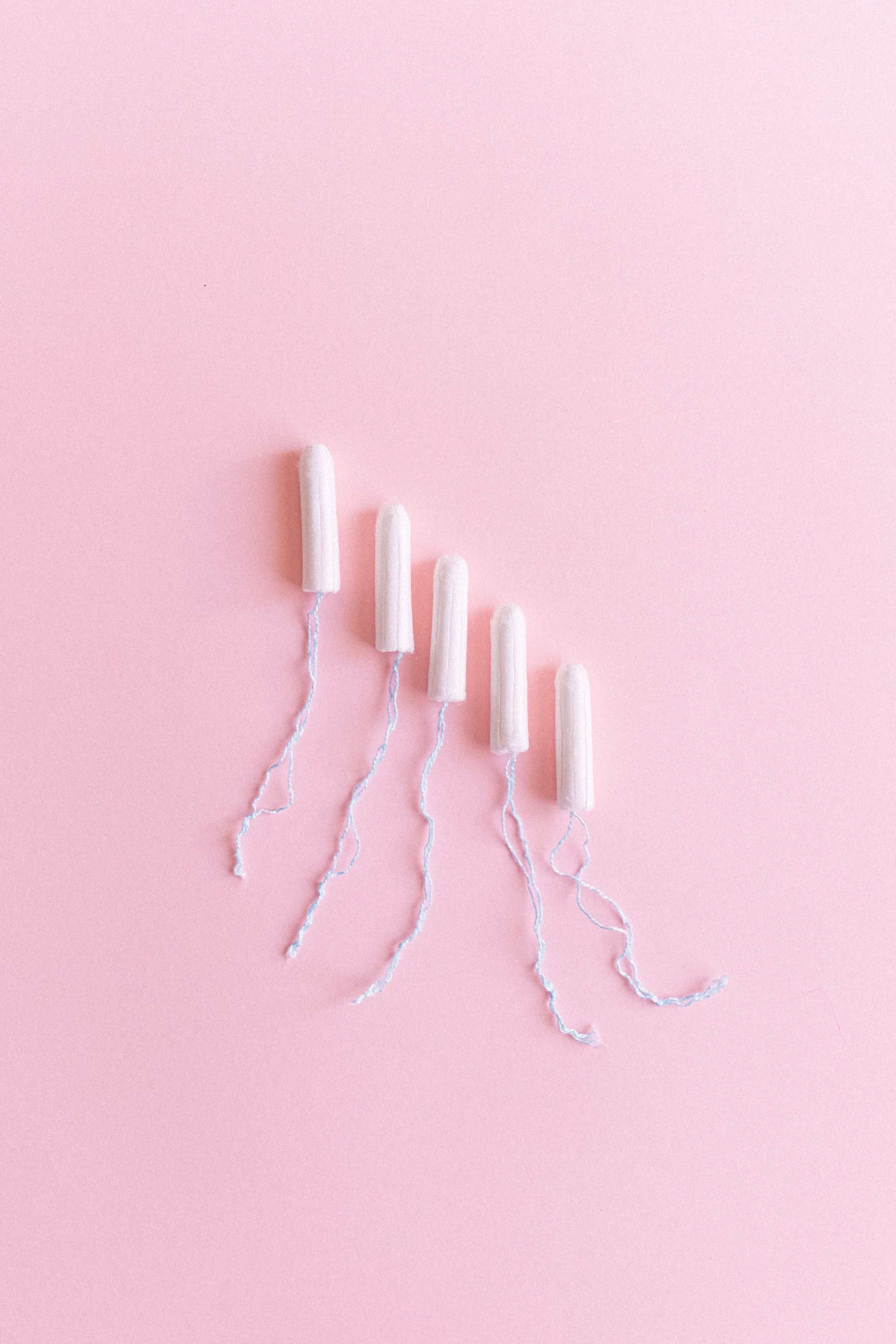
Picture by Anna Shvets
Picture by Anna Shvets
Ruby Davies, 25, Edinburgh
A BBQ with your family, in the height of summer – a relaxing, fun time. Even the best of us, eat far too much when it comes to a BBQ, and always end up finishing the day feeling far too full. Only for Ruby Davies, the pain she felt wasn’t just a case of eating too much. It was excruciating. It hospitalised her for 5 days, and only after numerous tests was she handed a leaflet and told she has endo.
But her journey to getting diagnosed began back when Ruby was 13, when she started her period. “As soon as I started my period, I struggled quite a lot with symptoms. They were pretty unmanageable; I was having to stay off school. There was really heavy bleeding, to the point I became anaemic,” she says.
As Ruby got older, her symptoms only continued to worsen. On top of this, age 15 she was living in Vietnam, which obviously came with its own multitude of problems – most specifically lack of sufficient health care. As Ruby says: “When there is only one NHS-approved doctor's, there is only one guy and he thinks everything is fine, so everything is fine.”
Aged 18, once back in the UK at university, Ruby found the pain getting considerably worse. “I was not able to go to uni classes, it seriously disrupted my social life. I always enjoyed studying but I just could not go to class and no one seemed to be taking it any further,” says Ruby and despite many trips to the doctors, she seemed unable to get to the bottom of the pain.
That was until one day in summer 2015. “We had been having a BBQ, having a really good time and then I was washing up and I just fell to the ground,” she says. “I thought I had been stabbed or shot.”
An ambulance came to pick Ruby up and they took her straight to hospital thinking it was to do with her appendix.
“I was in hospital for five days; I had the full package of non-evasive treatments. I was also on Morphine for the full five days and I was still in pain,” she says. “It was on the last day they decided to do a laparoscopy and the doctor told me I had serious endometriosis.”
“I felt such a mixture of relief and spitefulness to all the people who had been telling me I was a crazy person and now it’s here on paper,” says Ruby.
Ruby had only loosely heard about endometriosis at the time and was only handed a basic pamphlet at the hospital. “I was really overwhelmed at the time, but the long-term repercussions didn’t really hit home because I was only 19.
“Since then, I’ve had to go back in and have burnt away what’s there. I’ve had that every two years since. It is a strange feeling knowing that is part of your pain management,” says Ruby.
As a trainee lawyer, the surgery every two years and the symptoms of endometriosis have taken their toll on Ruby, but she still tries to remain positive about the future. “The fertility issues, I’ve prepared for and I’ve lived with endo for so long now that it’s not at the forefront of my mind, it’s just a factor of my life,” she says.
Sandi Monger, 26, Norwich
Six years of constant pelvic pain, throwing up during every period and even sight loss, just to be told it is all in your head. Only for Sandi Monger, she found out it wasn’t after an annual check-up to the hospital. An appointment that she wouldn’t forget, one that would finally explain the years of constant pain.
When she was 12 years old, in 2007, Sandi started her period and everything went smoothly, her periods would last for a week at a time and they’d be at the same time every month. But once she turned 15, Sandi began getting excruciating pelvic pain on her left-side.
“I went to the doctors, had an x-ray and they said I had a hip impingement, so obviously I just thought right that’s sorted then, had physio and that was it,” she says.
Unfortunately for Sandi, that wasn’t it. In 2012, when she was about 17 years old, her periods began getting constantly worse – going on for months at a time, more unmanageable, and that pain which was apparently the hip impingement, was only getting worse.
“I would just be really sweating, being sick, sometimes I couldn’t even see and the teachers would have to escort me down the stairs so I could go home, it was awful,
“So obviously, back I went to the doctors had my first MRI scan and that came back as normal,” she says. “So, I just thought well that was that then and carried on.”
Sandi then went to Liverpool for university, where she became sexually active, which caused her pain to be even worse and more noticeable – this is often very common with people who have endometriosis. Also, during her first year of university, she started getting much worse back pain, “I got this really excruciating back pain, on top of everything else. This time, the scan told me I had a slipped disk,” she says almost laughing at this point.
After many more visits during her time at university, often to male doctors, Sandi finally visited a doctor who started taking her concerns more seriously. “I had this appointment and they said it was with a newly qualified doctor, so I was a bit concerned after everything I’d already gone through, but I went and straight away she sent me for a colposcopy, an x-ray and an ultrasound,” she says.
This point they found some abnormal cells and a cyst, so Sandi kept having annual check-ups. In 2016, she was told the cyst had grown to 7cm and that she would need a laparoscopy to take a closer look.
“They kept my in overnight, but just as I was about to leave the nurse went ‘by the way, you do have endo,’ threw the leaflet at me and that was it,” she says. “I just felt shocked, I didn’t really know what to think, I didn’t really have a clue what it all meant. I did know though that I was still having these pains, which was a bit annoying.”
It was around six years after Sandi started suffering from her symptoms, aged 21, that she moved back home to Norwich from university and after to going to the doctors yet again, she finally got referred to a gynaecology specialist.
“So, it turned out at this point that they hadn’t actually removed anything in the original operation and because I’d been going on my placement year just after it, it had just been left. But this gynaecologist told me I had endo on my bowels and a little bit on my uterus,” she says.
In 2019, aged 24, Sandi finally underwent the surgery to remove the endometriosis, “I have to laugh now looking back, but at the time I just wanted to cry. It had gone on so long, I’d kept pain diaries, listed all my symptoms and it just felt like no one was looking at it,” she says.
“The pain is really good now, especially in comparison. I have some pain in the left-side, but before the surgery I couldn’t even have my nephew sit on my lap, at least I can now,” says Sandi. “I don’t really worry about the future, I will likely need surgery again, but for now I’m 26 and I’m just glad I don’t have to live in constant pain anymore.”
“I went to five different GPs, three different hospitals and four different x-rays, and I kept being told I had slipped disks and hip impingements, which I don’t even have,” she says. “I think it’s important to be a bit firmer at the doctors really, I kind of just went with what they said. You’ve really got to be your own advocate,” she says.
Sandi’s endometriosis journey took around 10 years in total from her first visit to the doctors, but this is scarily common. In fact, research suggest that it can take on average 7.5 years for women to get diagnosed with endometriosis – something which various charities are working towards improving and raising awareness for.
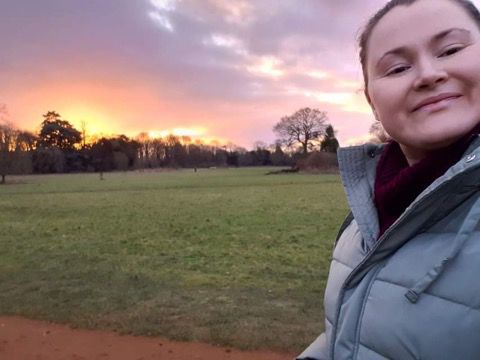
Endometriosis: recognising the symptoms
- Pain in your lower stomach or your back, which usually worsens during your period
- Period pain that prevents you from going about your normal life
- Pain during or after sex
- Pain when going to the toilet during your period
- Feeling sick, constipation, diarrhoea, or having blood in your urine during your period
- Trouble getting pregnant
- Experiencing heavy periods
But while pain is the most predominant symptom – some women don’t experience any pain or discomfort at all.
“I have seen some women who have horrendous endo, no gap between their bowel and their womb, everything stuck together. But they have had no pain at all. That’s why it is such an unusual condition,” says Neil Liversedge.
Find out more:
